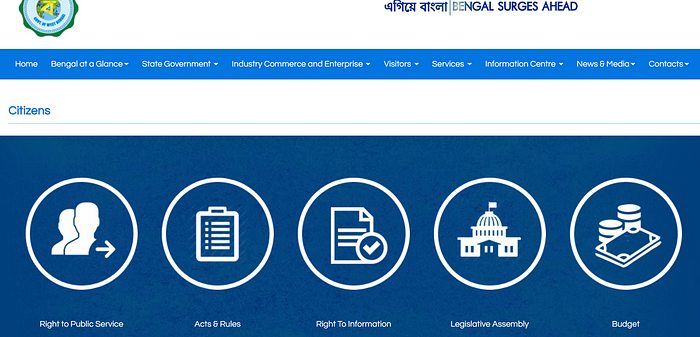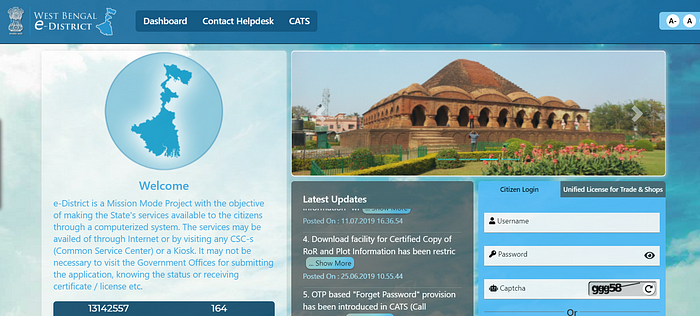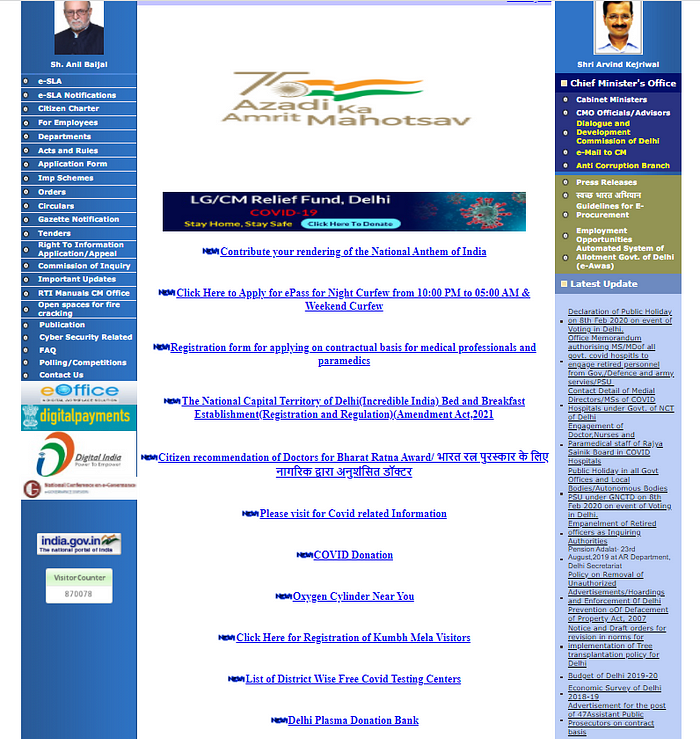Bengal, THINK digitally...
The erstwhile capital of British India, and my home state — West Bengal, India is famed as the cultural capital of India. It was not known for strong economic growth, which now has been the top political agenda. The state government has been focused on fuelling growth by making governance accessible and processes easy. The concepts discussed in the Digital governance class provided a solid backdrop to reflect on the progress made, and the efforts needed ahead.
“Digital- applying the culture, processes & technologies of the internet-era to respond to people’s raised expectations.” tweeted Tom Loosemore. This concept of digital as a way of thinking rather than as yet another platform for accessing an existing process could unlock tremendous insights for Bengal in their journey of e-governance.
Breaking the paper trap
It was a powerful realization in Class 1 that text on paper allowed standardization of rules and is the cornerstone of nation-state institutions. Ironically, that same paper trap is one of the most significant barriers to digital transformation today. The WB government website currently is majorly a digital bulletin board than an effective window of conversation. A couple of e-governance offerings on the site are pdf forms that need to be downloaded, filled, and submitted in physical offices where a paper form could have also been available. Vertical accountability of each department has led to separate websites with no standardization, high duplication no interconnected functionalities.


The birth and death certificate links land the user on pdf forms that must be printed and submitted in-person, making the digital access redundant. The licensing process seemed to be digitally mature — corroborating our hypothesis of vertical responsibility of departments leading to non-standard user experience.

It is worth reconsidering the organizational structure wherein the digital teams with support services have minimal linkage to major decision-making teams. Only when Digital sits at the policymaking table can conversations happen about interconnected databases, connections between support services, and analytics for more efficient decision making.
Digital could increase the divide
For Digital to improve access to governance, the digital infrastructure needs to be meaningfully accessible to all state citizens. Internet penetration has huge variance between urban and rural areas, genders, and age groups and stands at an average of 43%. Trust in government and other ecosystem staples for digital governance’s success are also in the early stages of maturity.
Therefore to achieve inclusive development, West Bengal may want to invest in access infrastructure like digital kiosks for e-governance in ration stores, use women’s self-help groups to reduce gender disparity in access.
Thinking like the citizen/user

The state website continues to look more like a bulletin board than a window of conversation/solution. The landing page has just one click option motivated by user action; there are options to KNOW more about government actions.
A quick comparison with another state of India (Delhi) shows a far stronger leaning towards e-governance based hyperlinks.

The landing page of the US state of Massachusetts website seemed eons ahead in terms of user-centric design by placing a search bar at the center and showing a few popular searches. Grouping e-governance under the living, working, learning, and visiting seemed like precisely the kind of broad guidance a site visitor would need.

It may make sense to draw a VPD to chart out what the stakeholders of the Bengal government genuinely want, need, and could be meaningfully catered to before translating it digitally. Basic needs, likeability to change the language from English to vernacular can be incorporated in site design when we shift to user-centric design.
While benchmarking the state websites, I realized that possibly the most critical step in designing the digital governance strategy is the conviction of the political and bureaucratic leadership that governance is a service and therefore placing the citizens at the center of decision-making and design. As state institutions grapple with living up to this servant-style leadership, not just our government websites — even our policymaking continues to be vertically siloed, trapped in the semantics of text, and far removed from what the community truly wants.
It’s high time we start THINKING digitally.
